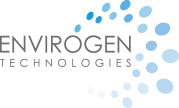Project will feature two different biofilter designs to deliver best-cost, long-term solution
Kingwood, TX, 21 August 2012 — Envirogen Technologies, Inc. (Envirogen) announced today that it has been awarded a contract to supply two biological odor control systems as part of a Western Wake Regional Wastewater Management Facility (WWRWMF) construction initiative, managed by the Town of Cary, NC and its municipal partners (the towns of Apex, Morrisville and Holly Springs, NC). The two systems will utilize Envirogen’s proven biofiltration technology to remove odors and 99% of hydrogen sulfide (H2S) from air at the wastewater operation’s West Cary and Beaver Creek pump stations. The West Cary site will feature Envirogen’s new BTF-4500 modular vessel design, while the Beaver Creek site will receive a custom-designed built-in-place biofilter. Envirogen will also provide on-site customer support and training to assist in start-up, and a 10-year warranty covering media life.
According to Robert L. Loken, Vice President, Product Management and Great Lakes Region for Envirogen, the two systems illustrate the company’s ability to design and build high-performance, low-cost systems that are tailored to specific customer needs. “We’ve long offered a full range of system sizes and options, from smaller modular systems up to large, custom built-in-place installations,” Loken said. “The introduction of the BTF-4500 to our odor control product line allows us to offer the functionality of two treatment systems – biotrickling for H2S and biofilter for further odor reduction – in a pre-fabricated fiberglass vessel that provides the same reliable, low-cost performance and design excellence that Envirogen is known for. As always, the customer wins by getting just the right system to best meet all their requirements,” he added.
The new odor control systems at West Cary and Beaver Creek will handle H2S concentrations of 20-40 parts per million by volume (ppmv) at respective air flow rates of 6,700 and 8,250 cubic feet per minute (cfm). Both will achieve 99% H2S removal along with control of total odor. The Beaver Creek system will consist of a covered, poured-in-place concrete treatment vessel, while the BTF-4500 system at West Cary will be a pre-fabricated corrosion-resistant fiberglass treatment vessel ready for placement on a simple, compacted stone foundation. Envirogen’s new BTF odor control series features the benefits of a high efficiency biotrickling system for H2S removal and humidification in a short empty bed reaction time (EBRT) (7-10 sec.) The second stage biofilter is designed to work on mercaptans and tough-to-treat odors such as dimethyl sulfide. The biotrickling portion operates at a low pH of 1-2 with the appropriate bacteria, and has a continuous recirculation system. The biofilter portion of the design operates at a neutral pH with the appropriate media and bacteria for digestion of mercaptans and other organic odors (20-40 sec. EBRT). This represents the “state of the art” in packaged designed systems. Envirogen will also provide on-site customer support and training to assist in start-up. Long-term lifecycle costs are addressed via a 10-year warranty covering media life. Both systems are currently in the design phase, with equipment delivery anticipated by the end of 2012.
Envirogen’s biofilter product line features a set of engineered media matched to each specific application, ensuring high performance and a long media service life. Naturally occurring microorganisms residing on the media consume odor-causing compounds, requiring only irrigation water and small amounts of nutrients to operate. The systems use minimal energy, and little or no chemicals, cutting operating costs and eliminating the need for chemical storage and handling. Envirogen’s biofiltration is a sustainable “green” technology, providing long-term trouble-free service with little or no operator attention and minimal chemical and energy usage.
According to Loken, the design flexibility of Envirogen’s biofilter and biotower product line allows the company to design systems precisely matched to customer requirements and also to develop synergistic options and opportunities for improved performance. “Even when faced with rigorous performance standards, our engineers can develop a treatment scheme that delivers the best solution at the lowest cost,” Loken explained. “For this latest project, we went with two different system designs in order to address various factors affecting the two sites, including construction conditions. In the process, we were able to achieve significant cost savings for the client compared to taking a ‘one-size-fits-all’ approach to their specifications. At Envirogen, we’re always eager to bring our full range of technology and expertise to bear on helping the customer meet their treatment goals reliably and economically,” he concluded.
